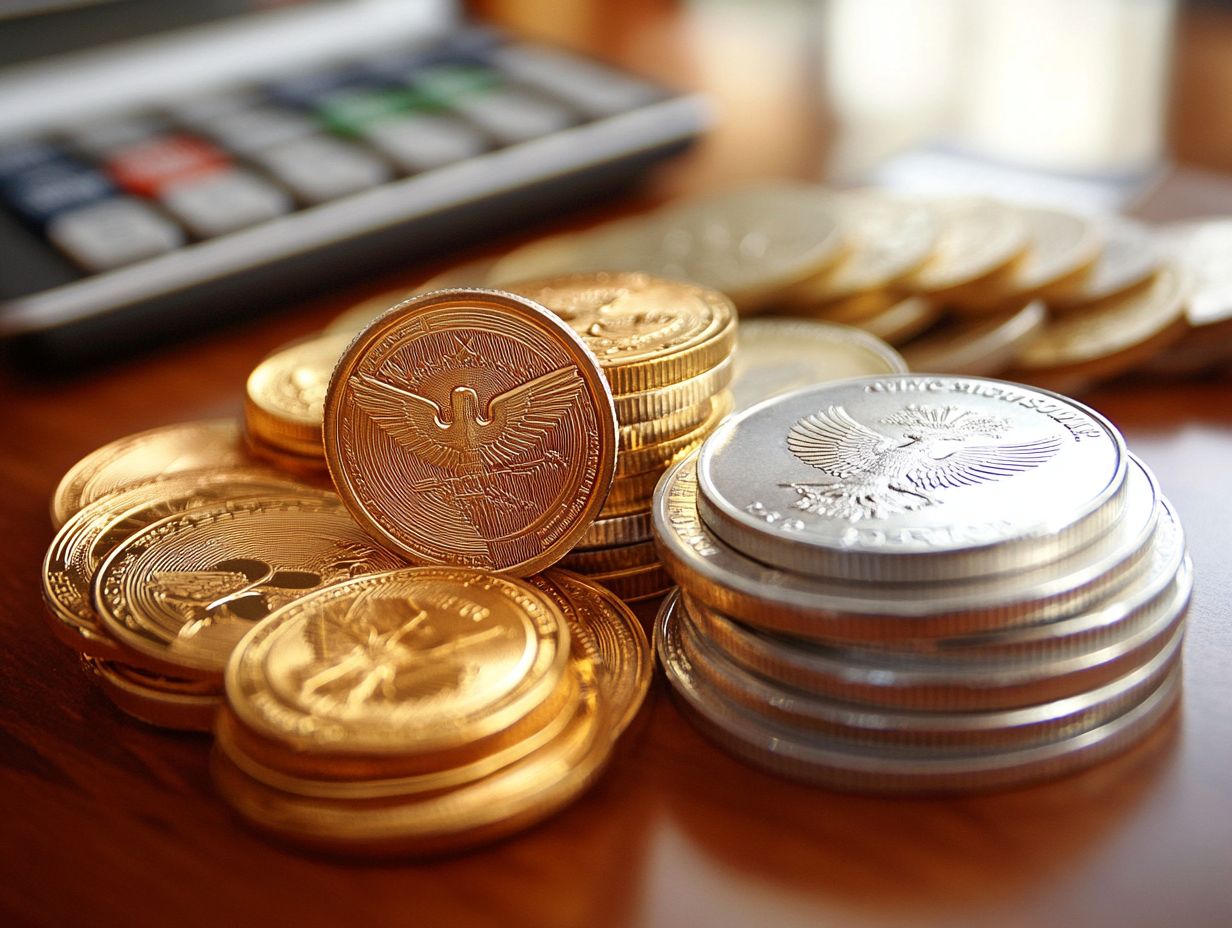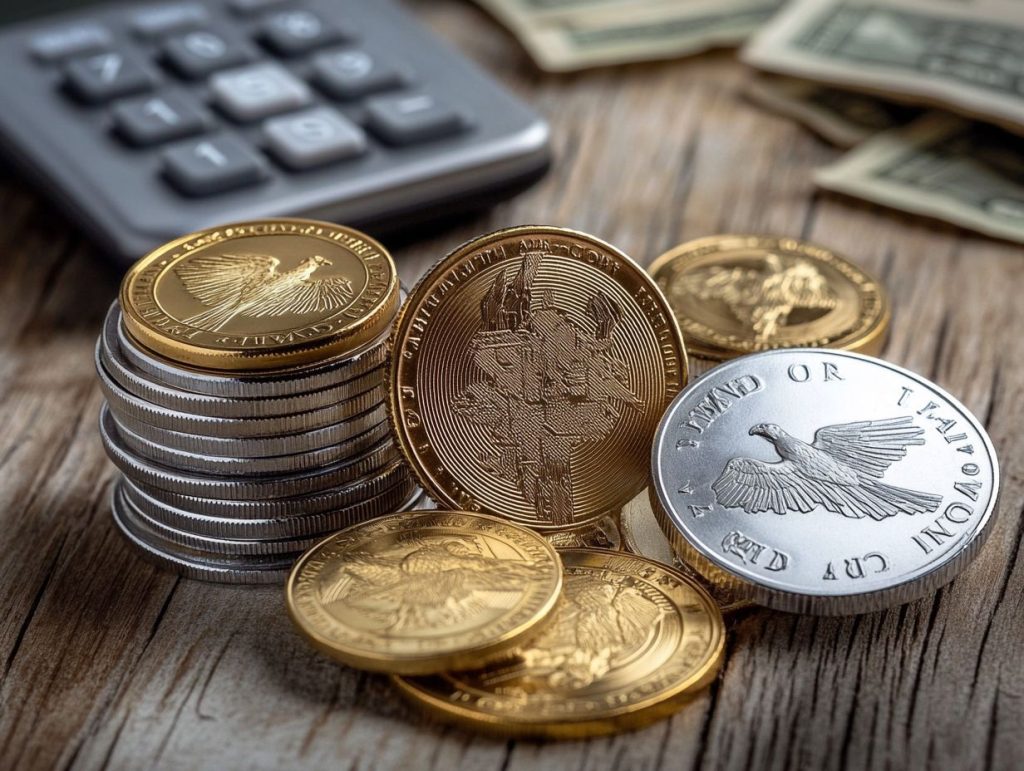Investing in gold and silver has become a popular strategy for protecting and growing retirement savings. With the right knowledge, you can harness the potential of precious metals through a Precious Metal IRA.
This guide explains what a Precious Metal IRA is, how it operates, and the types of gold and silver you can include. You will also discover the benefits of these investments, how to set up your IRA, and important considerations to keep in mind.
Whether you are an experienced investor or just starting, this resource will provide the insights needed to make informed decisions for your financial future.
What Is a Precious Metal IRA?
A Precious Metal IRA is a specialized Individual Retirement Account that enables investors to incorporate physical precious metals, such as gold, silver, and palladium, into their retirement portfolios. This type of IRA distinguishes itself from traditional accounts, which typically permit investments solely in stocks, bonds, and mutual funds.
By including these tangible assets, individuals can not only hedge against inflation and market volatility but also diversify their retirement savings in a manner that has the potential to enhance their overall financial security. It is important to note that there are specific regulations governing the types of precious metals that are permissible, including bullion and coins that meet minimum purity standards.
In this context, consulting with a financial planner can be highly beneficial. Such professionals can assist in navigating the complexities associated with establishing a Precious Metal IRA and optimizing the investment strategy to align with specific retirement objectives.
How Does a Precious Metal IRA Work?
A Precious Metal IRA operates as a self-directed IRA, granting investors the authority to select and manage their investments in physical precious metals, which must be stored in an approved depository.
This self-directed approach enables individuals to diversify their portfolios beyond conventional stocks and bonds, allowing for investment in tangible assets such as gold, silver, platinum, and palladium. The role of a precious metal dealer is crucial, as they facilitate the acquisition of these physical assets while ensuring compliance with IRS regulations concerning the quality and type of metals permissible within the IRA.
Utilizing a secure depository for storage is essential, as it not only protects the metals but also provides the peace of mind that is vital for investors. This strategic combination of investment and protective measures serves as a robust hedge against market fluctuations, ultimately contributing to a more resilient financial plan.
What Types of Gold and Silver Can You Include in an IRA?

When considering a Precious Metal IRA, investors have the opportunity to include various forms of gold, silver, and palladium. This includes well-known options such as American Eagle coins and Canadian Maple Leaf coins, which comply with IRS regulations.
These guidelines stipulate that only specific types of bullion and coins may be held in such accounts, with particular emphasis placed on the purity levels of each item. For instance, gold must possess a minimum purity of 99.5%, while silver must be 99.9% pure to satisfy IRS standards. The weight of the metals is also critical, as investment-grade bullion must adhere to specific weight requirements to qualify.
Furthermore, it is important for investors to understand the distinction between numismatic coins and bullion. Numismatic coins generally carry a higher collectible value, which may not align with the investment objectives of those focused on asset preservation and growth.
Why Consider Investing in Precious Metals for Retirement?
Investing in precious metals for retirement represents a strategic approach that offers protection against volatility risk and potential economic downturns, thereby establishing these assets as a fundamental component in numerous retirement plans.
Historically, precious metals such as gold and silver have exhibited remarkable resilience during times of financial uncertainty, often preserving or even appreciating in value when stock markets decline. This characteristic underscores their importance in a diversified investment portfolio, which can effectively mitigate risk.
Moreover, the psychological comfort associated with holding tangible assets should not be underestimated. Unlike stocks or bonds, precious metals are physical commodities that can provide a sense of security, offering investors a tangible safety net in times of financial turbulence.
These factors collectively contribute to a comprehensive retirement strategy, give the power toing individuals to navigate economic challenges with greater confidence.
How Much of Your IRA Should Include Precious Metals?

Determining the appropriate allocation of precious metals within an Individual Retirement Account (IRA) is contingent upon one’s overall investment strategy, risk tolerance, and retirement objectives.
Given that each investor’s situation is distinct, it is crucial to assess how gold, silver, and other precious metals can be integrated into a comprehensive asset allocation strategy. Financial professionals typically recommend allocating between 5% and 15% of a retirement portfolio to these assets, as they can act as a hedge against inflation and market volatility.
This allocation may need to be adjusted in response to prevailing economic conditions, such as increasing interest rates or fluctuations in the stock market, prompting investors to reevaluate their strategies. By maintaining a well-diversified portfolio, investors can mitigate risks while taking advantage of the potential stability that precious metals may offer during periods of uncertainty.
How to Open a Precious Metal IRA
Establishing a Precious Metal IRA entails several important steps, including the selection of a reputable financial planner and a qualified precious metal dealer to effectively facilitate the process.
Steps to Establish Your Precious Metal IRA

To establish a Precious Metal IRA, it is essential to complete the necessary paperwork, select a self-directed IRA custodian, and finalize the investment portfolio with the chosen precious metals.
This initial phase typically requires thorough research to identify a custodian who specializes in these types of accounts, ensuring that they possess a strong reputation and are compliant with IRS regulations. Once a suitable custodian has been selected, the subsequent step is to fund the account. This may be accomplished through a transfer from an existing retirement account or by making a direct contribution, adhering to annual contribution limits.
After funding the account, the account holder should collaborate closely with the custodian to select qualified precious metals, including gold, silver, platinum, or palladium, ensuring that these investments meet IRS requirements regarding purity and type. Each of these steps is vital for successfully establishing a Precious Metal IRA that aligns with one’s financial objectives.
Special Considerations for Precious Metal IRAs
When considering investments in Precious Metal IRAs, it is imperative to account for several specific considerations, particularly those pertaining to IRS regulations that govern retirement accounts and safeguard wealth.
These regulations are essential for preserving the integrity of investments and maximizing the potential for future gains. Investors must pay close attention to the contribution limits established by the IRS, which dictate the permissible amounts that can be added to the retirement account on an annual basis.
Additionally, the storage requirements are stringent; only approved depositories are permitted to hold the physical metals, thereby protecting these assets from theft or mismanagement. Non-compliance with these guidelines may result in significant penalties, including the potential disqualification of the IRA.
Consequently, it is critical for anyone contemplating this investment strategy to not only comprehend these regulations but also to ensure ongoing adherence to them in order to secure a successful financial future.
How to Make Withdrawals from a Precious Metal IRA?
Making withdrawals from a Precious Metal IRA requires a comprehensive understanding of the rules and regulations governing the process to ensure compliance and maximize tax benefits on retirement funds.
Navigating this withdrawal process is critical for effective financial planning, as the tax implications can significantly influence overall returns. When an individual opts for early withdrawals, it is essential to be aware of the potential penalties that may apply, which generally amount to 10% of the total withdrawal if taken before the age of 59½.
The conversion of physical metals into cash typically involves selling the assets to a dealer, a process that may present its own complexities concerning pricing and liquidity. Alternatively, individuals have the option to roll over their Precious Metal IRA into another retirement account, thereby maintaining their tax-deferred status while potentially diversifying their investment strategy.
Is a Precious Metal IRA Right for You?
Determining the suitability of a Precious Metal IRA requires a comprehensive evaluation of one’s financial circumstances, investment strategies, and consultation with a qualified financial planner.
It is essential to consider various factors, including personal risk tolerance, which will assist in assessing the level of volatility one can withstand throughout their investment journey. Aligning this investment option with long-term financial goals can significantly influence the overall retirement strategy.
Additionally, it is important to recognize how precious metals can function as a hedge against inflation and economic downturns, while also playing a vital role in diversifying a broader investment portfolio. A well-balanced approach can help mitigate risks and enhance potential returns. Therefore, careful consideration of these elements can facilitate more informed decisions that align with individual financial aspirations.

